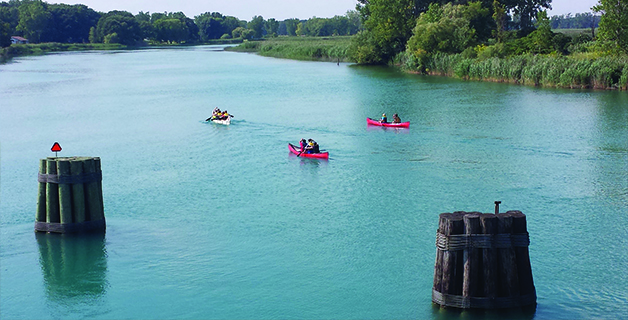Water, Weather & Environment
Cooperating to address diverse environmental needs

Conservation authorities integrate watershed data
Inspired by the Eastern Ontario Conservation Authority HUB, a group of conservation authorities or local watershed districts in Ontario also identified the need to breakdown several barriers to effectively manage watersheds that extend beyond the boundaries of their own authority as well as municipalities.
They have formed a cooperative data sharing hub to establish a single clearinghouse to safely and easily share information for the management of water quality, quantity and biological integrity. The online system not only reduces redundant costs and efforts for individual CAs to implement the software, but it also increases each organization’s access to more knowledge as each authority is empowered to focus on its unique needs — ranging from purely hydrometric / flood forecasting to more comprehensive biological assessments, and system metadata.
- The challenge
- The solution
- The benefits
The challenge
The challenge
The provincial government of Ontario has charged conservation authorities to prioritize the environmental needs of watersheds, with consideration of both residential and commercial interests.
Since neighboring CAs face similar but distinct watershed management challenges, they decided that a collaborative approach would overcome resource constraints and conflicts of each entity.
Their requirements included:
- Capture of a high-density of data from 100 monitoring stations from
hourly and daily telemetry to 5- and 15-minute increments - Integration of GIS data
- Multiple data visualization options
- Analytical tools for calculating and reporting cumulative impacts of agricultural and urban development in addition to conservation initiatives
They further required the system to be scalable to future needs the group had yet to identify.
The solution
The solution
With some grant funding from the Ontario Ministry of Natural Resources and Forestry and Public Safety Canada via the National Disaster Mitigation Program, the HUB initiated a software implementation project.
Members manage data online — recording, analyzing and reporting real-time data feeds — using Water Information System by KISTERS (WISKI) and integrating information with Esri GIS tools.
Data managers are empowered to automate and manually validate, analyze and report information in real time. Each authority can further enforce its own rules above and beyond the common standard.
Western Ontario HUB members have online access to data using KISTERS Web Interoperability Services. Each approved user can select information from a specific conservation authority as well as parameters of interest.
The web services display multiple hydrometric plots, which streamline the amount of the quality-assured data HUB users rely on to make decisions.
The benefits
The benefits
Reliable Data. The Western Ontario Conservation Authority HUB maintains standardized data collection, management, and reporting for each CA that reports to the Ontario Ministry of Natural Resources and Forestry. Automating reporting tasks adds up time savings, especially as smaller entities don’t have many personnel.
Comprehensive Context. Seamless integration of WISKI and arcGIS software by Esri brings together a truly regional view of current and historic conditions. Despite various data sources and a variety of data formats, information is accessible — quickly and concisely via graphs, tables and maps. Identification and evaluation of trends enables authorities to inform and invite appropriate stakeholders and the public to participate in solving shared problems.
Individual Recognition. While members of the Western HUB share several commonalities, each authority has different issues to resolve and initiatives to enhance the environment in its care. An entity can choose to apply models to its data to predict flooding and respond with green infrastructure plans. With a nearly unlimited storage capacity, the same data system also makes it possible for other CAs to take a holistic approach to biological sampling and analysis.
Share this
Expanding the system to a wider group of users allowed us to share knowledge and costs, and to be able to create data visualization solutions available for all members to take advantage of, in a seamless manner.
Mark, Helsten, Western Ontario Conservation Authority HUB -- western Ontario, Canada